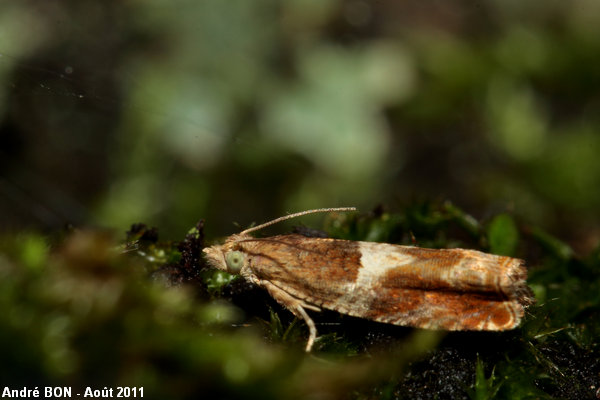
| Nut Bud Moth (Epinotia tenerana (Denis and Schiffermüller, 1775)) |

|
|
Scientific name: Epinotia tenerana (Denis and Schiffermüller, 1775) Common name: Nut Bud Moth Other names: Alder Tortricid French name: Order: Lepidoptera Suborder: Microlepidoptera Family: Tortricidae Subfamily: Olethreutinae Wingspan: 12-16 mm. Biotope: Damp woodlands, woodland edges, parks and gardens. Geographic area: Europe, Asia east to China and Japan. Flight time: July to early October. Number of generations : 2 Caterpillar: Whitish or yellowish green with a dark brown head ahead of a dark brown prothoracic plate with black maculation. The legs are dark brown. Host plant: Hazels (Corylus) and Common Alder (Alnus glutinosa). The larvae first feed on the catkins and then burrow into the buds. |
Epinotia tenerana shows globally reddish brown fore wings, sometimes with a whitish or greyish median marking. You can distinguish three or four weakly marked black lines bordered with grey. The hind wings are greyish brown with a copper sheen. The head, the thorax and the abdomen are brown. The antennae are thread-like. There is a possible confusion with Ancylis mitterbacheriana, but this last one has pointed and curved apex on the fore wings. Imagos are often observed during the day while resting on the leaves or trunks of the host plants. They are active during the night. Epinotia tenerana over winters as a caterpillar. |
| [To know more about the Nut Bud Moth] [Top] |

|
You may explain this observation of Epinotia tenerana in my garden by the presence of one Common Hazel. |